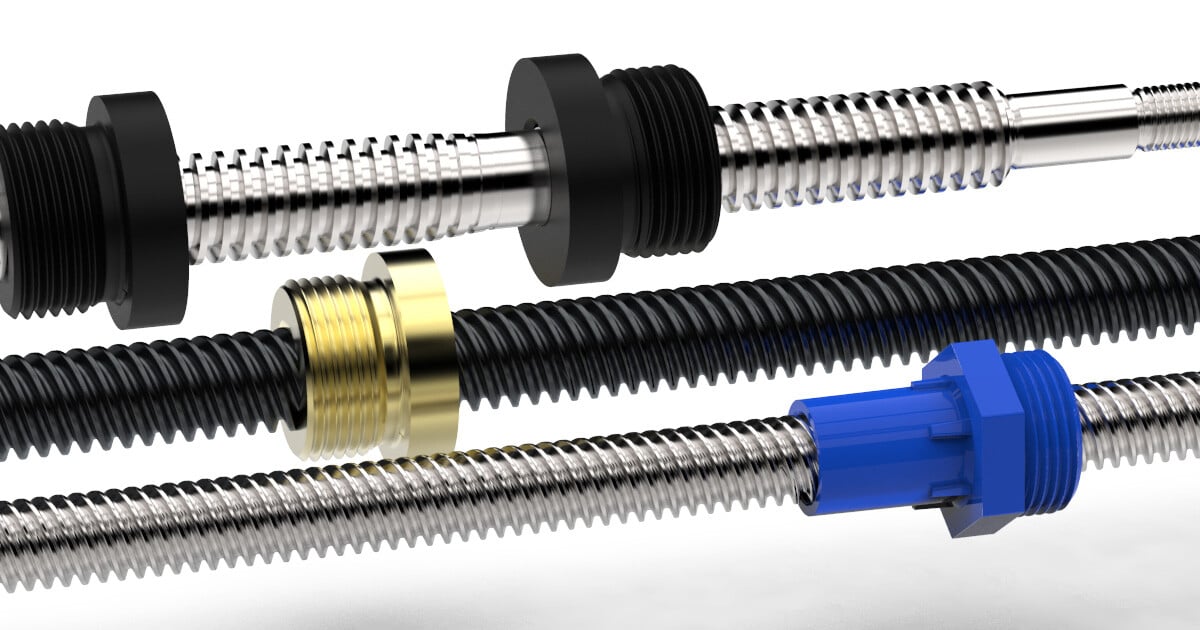How to Lubricate Lead Screws

It is important to regularly maintain lead screws to ensure they have a long lifespan and operate optimally. While lead screws often operate efficiently with minimal maintenance, regular lubrication can significantly enhance their functionality. Here's a comprehensive guide on when and how to lubricate your lead screws.
When lubrication is needed
Remember to inspect and lubricate the lead screws every three months regularly. This schedule helps to maintain smooth operation and prevent potential issues caused by friction and wear. However, the maintenance interval can vary based on the operating environment and usage. High-use applications or those in dusty or harsh environments require more frequent lubrication, so it is wise to establish a regular check-up.
Regular maintenance is necessary, and it's also essential to follow a schedule to watch for signs that indicate your lead screws may need to be cleaned or lubricated. Here are some common indicators:
- If you hear grinding, squeaking, or other unusual sounds during operation, it could be a sign that the lead screws are dry and need lubrication.
- If the lead screws are more challenging to turn or the system seems to be working harder than usual, this increased friction could indicate that the lead screws may need to be cleaned and lubricated.
- Inspect the lead screws regularly. Look for any visible wear or damage, such as scratches or grooves, which indicates that lubrication is needed to prevent further wear.
- Dust or plastic particles accumulating on the lead screws can increase friction and wear. Regular cleaning and lubrication can help solve this issue.
- In environments where the lead screws are in constant use, it may be necessary to lubricate more frequently than the standard three-month interval.
- Operating in dusty, dirty, or humid conditions requires frequent lubrication to maintain optimal performance and protect against corrosion or contamination.
By implementing a regular maintenance schedule and keeping an eye out for signs that lubrication is needed, you can be sure that your lead screws continue to perform efficiently and effectively. Proper lubrication not only extends the life of your lead screws but also helps maintain the precision and reliability of your equipment.
Lubrication instructions
When you notice signs indicating that your lead screws require cleaning and lubrication, you should be ready. Here are the steps and materials needed to lubricate your lead screws properly.
Materials needed:
- Cleaning cloth (paper towels, old rags, etc.)
- Lubricant (grease or dry lubricant)
- Acid brush (if using grease lubricant)
- Disposable gloves
Step-by-step guide:
- Make sure you have enough room to apply the lubricant.
- Place a paper towel or cleaning cloth under the areas where you are working. This added step will catch any excess lubricant, as well as any particles when cleaning the screw for the first time.
- Put on your gloves. It is essential to have proper PPE when cleaning.
- Clear dust or plastic particles from your lead screws with a cloth.
- Apply a thin layer of your lubricant choice on the lead screws.
- Clear any excess lubricant accumulated near the lead screw nuts.
- Complete the lubrication of the lead screws.
- Make sure nothing is dripping off the screws.
- Remove the paper towel/cloth that was underneath to catch the excess.
- Run the equipment that uses the lead screws a few times to see if there is improvement.
- Write down when you did the lubrication to keep track of how often you need to lubricate and if you need to replace your lead screws at some point.
Conclusion
By following these steps, you can ensure your lead screws are well-maintained and continue to perform at their best. Consistent lubrication is a simple yet effective way to extend the lifespan of your lead screws and maintain the precision and reliability of your equipment.


